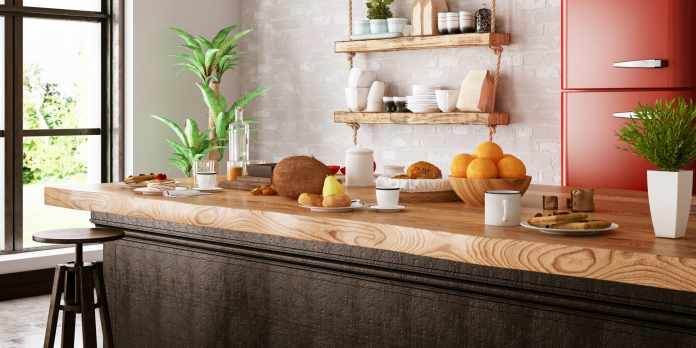Choosing the right material for your kitchen surface is perhaps the most challenging job when it comes to building your dream house. You need to choose a visually appealing material for kitchen surfaces. The material should also be durable and tailored to withstand extreme heat and stains. Granite and soapstone are perhaps the most popular contenders of all the materials that are used for kitchen countertops. Besides adding a charm to your kitchen, both these materials offer a host of other benefits.
This comparative guide is for you if you are having trouble choosing the perfect material for your kitchen countertops. We have covered everything you need to know about granite and soapstone. This will help you decide which one can cater to your needs better.
While granite has been used for kitchen services for ages, soapstone is relatively new in the market. If you want expert advice on the benefits of using soapstone for your kitchen countertop, click here.
Table of Contents
Granite vs. Soapstone: Which Is Better?
There is no objective answer to this question. Both elements come with their own set of benefits and drawbacks. Therefore, it depends on your requirements and which of them can meet them better for you to choose the ideal material for your kitchen.
1. Appearance
Appearance is one of the most important criteria for choosing the right surface material for your kitchen. Soapstone is generally available in dark shades like gray, blue, and green which gets darker with time. The dark surface ensures that spots and spills are not easily visible.
On the other hand, granite offers more options in terms of design and pattern. It is available in various colours and unique prints, adding an instant charm and quirk to your kitchen.
2. Porosity
Porosity is another essential factor to consider when it comes to choosing the perfect kitchen surface. After all, the material’s porosity level decides how quickly stains will be absorbed and removed. Soapstone has the upper hand here because it’s almost non-porous. This implies that it hinders any stain from going too deep into the stone layers.
Porosity is one of the most significant downsides to using granite. The stone is highly porous. Hence, it efficiently retains marks and stains. Moreover, the chances of the marks being visible are even higher if you are using light colour granite stones.
3. Hardness
Your kitchen surfaces tolerate a lot of force and pressure each day. Hence, you need a material that is hard enough to withstand all the pressure without cracking.
Granite is much harder than soapstone. In fact, granite is the hardest of all the materials available for kitchen surfaces. On the other hand, soapstone is very soft and pliable. It is also infamous for retaining scratches and dents pretty easily. So, if hardness is one of your top priorities for choosing kitchen surfaces, you should definitely go for granite.
4. Heat Resistance
With the constant boiling pots and hot fumes from the oven, your kitchen undoubtedly has the highest temperature in the house. So, you need to choose a material that can withstand prolonged exposure to extreme heat.
Soapstone is a lot more resistant to heat than granite. The fact that it is sometimes used in the cookware itself explains that heat has no adverse effect on it. Granite, too, is heat resistant, albeit only a little. You can easily leave hot utensils on granite surfaces without fearing blisters, melting, and burns. However, if we were to recommend anyone, it’d be soapstone!
5. Maintenance
Soapstone is comparatively easier to maintain and clean than granite. An added advantage of soapstone is that it does not need to be sealed. Moreover, it is naturally non-porous–blocks moisture even without a seal.
However, this is not the case with granite. For granite to be durable, long-lasting, and clean, it needs to be sealed regularly. Without a sealant, it will easily succumb to moisture. Although moisture cannot degrade the quality of the stone, it can certainly discolour it.
6. Cost
All the benefits put aside, the cost of the material is one of the most crucial factors when it comes to kitchen surfaces. Soapstone offers a range of benefits and is also attractive. Hence, it is a little pricey. The average cost of getting soapstone installed in your kitchen can be around $70 to $120 per square foot, depending on the brand.
On the other hand, granite is pretty affordable. This is because it is one of the oldest kitchen surface materials. It can cost anywhere between $40 to $100 per square foot, depending on your location and the brand you choose.
7. Resale Value
The kitchen and bathroom are some of the most important selling points when it comes to zeroing in on the resale value of your house. Moreover, having a kitchen with gorgeous surfaces will certainly add to your house’s value.
Both granite and soapstone have high resale value. However, houses with soapstone countertops demand a higher value than the ones with granite counters. This is because of how uncommon soapstone is as compared to granite. After all, if all the potential properties look the same, the buyer will obviously be willing to pay a little extra for something unique. That being said, the difference in the resale value of granite and soapstone might not be very significant.
Endnote
As mentioned earlier, it’s not possible to objectively state which of these materials is better suited for your kitchen. But we’re pretty sure that this detailed comparison will help you understand what each of them brings to the table and if they are adept enough to fulfill your requirements or not.
Regardless of the material you choose, it is important to opt for a reputable brand like Caesarstone that offers quality products and services. Their experts will also educate you on the types of material and designs and help you pick the one that’ll best suit your kitchen and home decor.

















